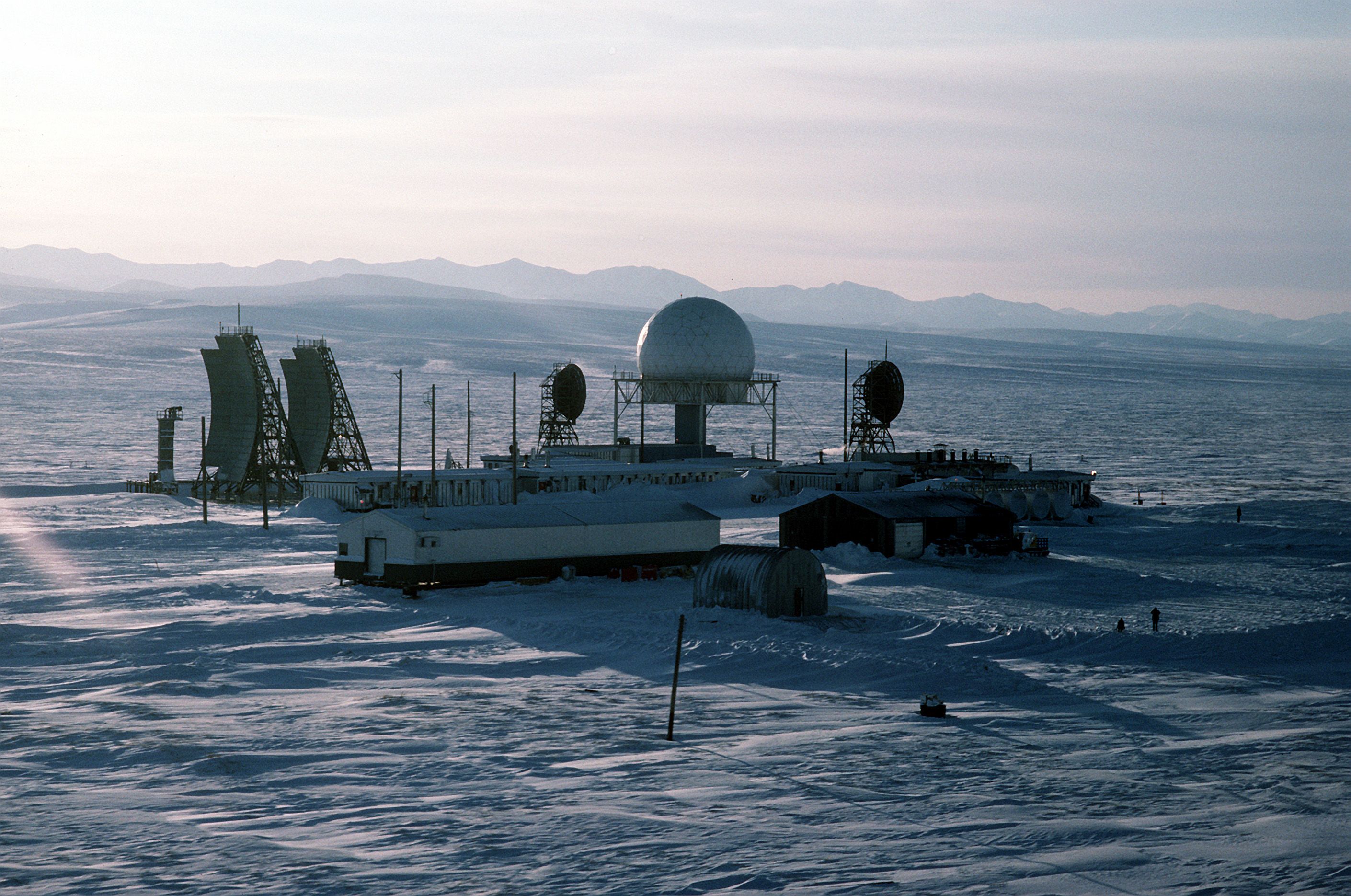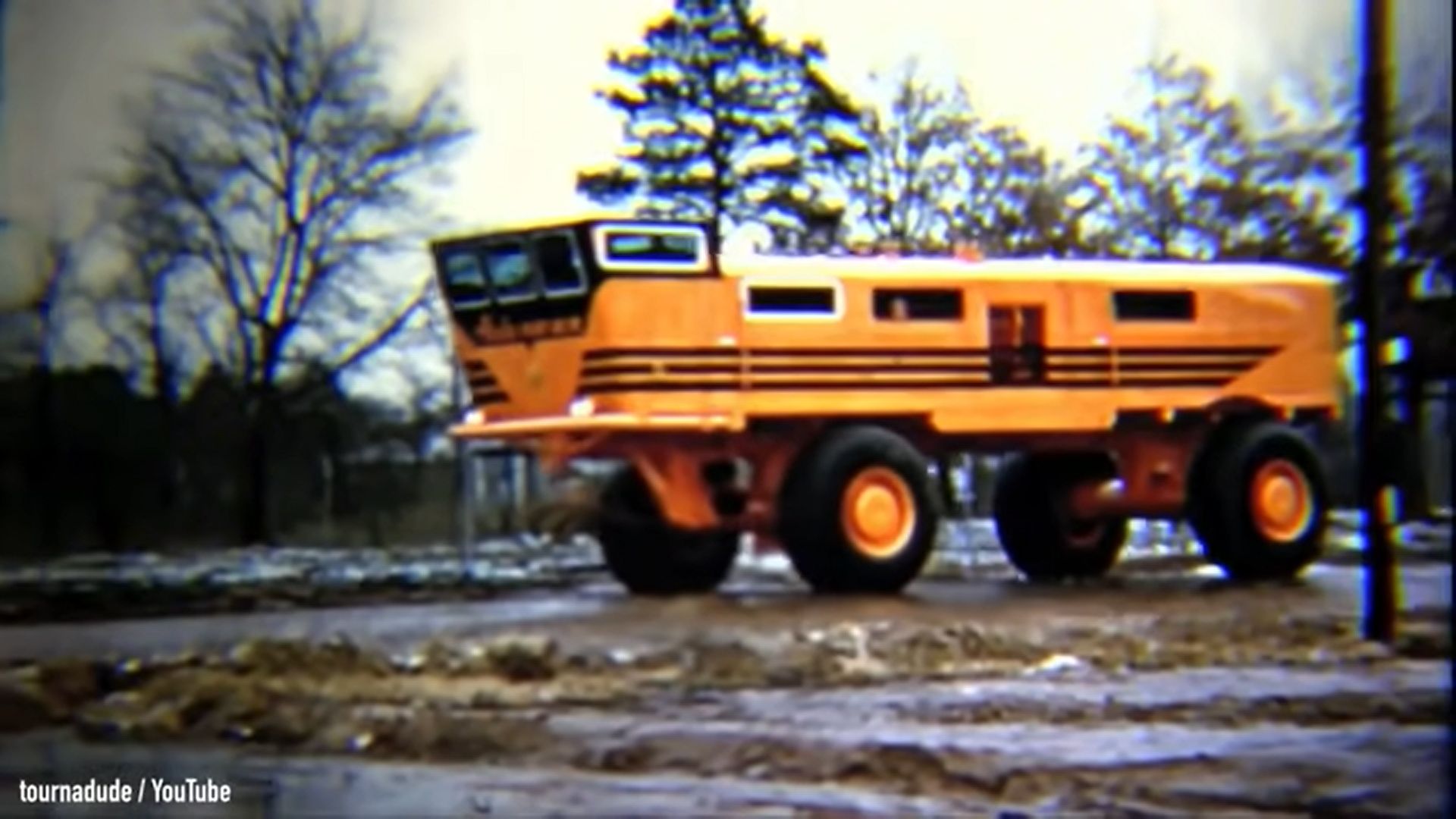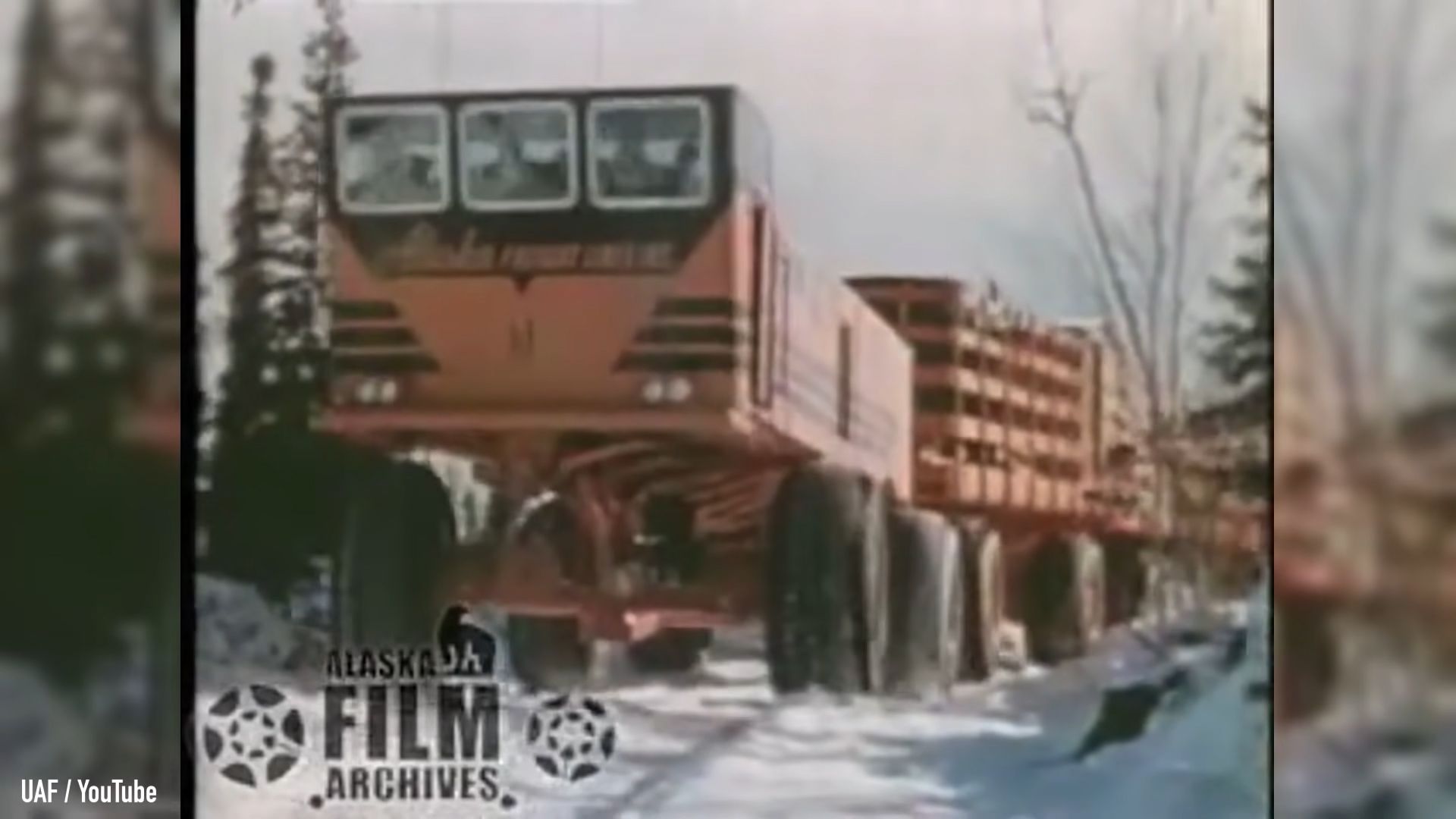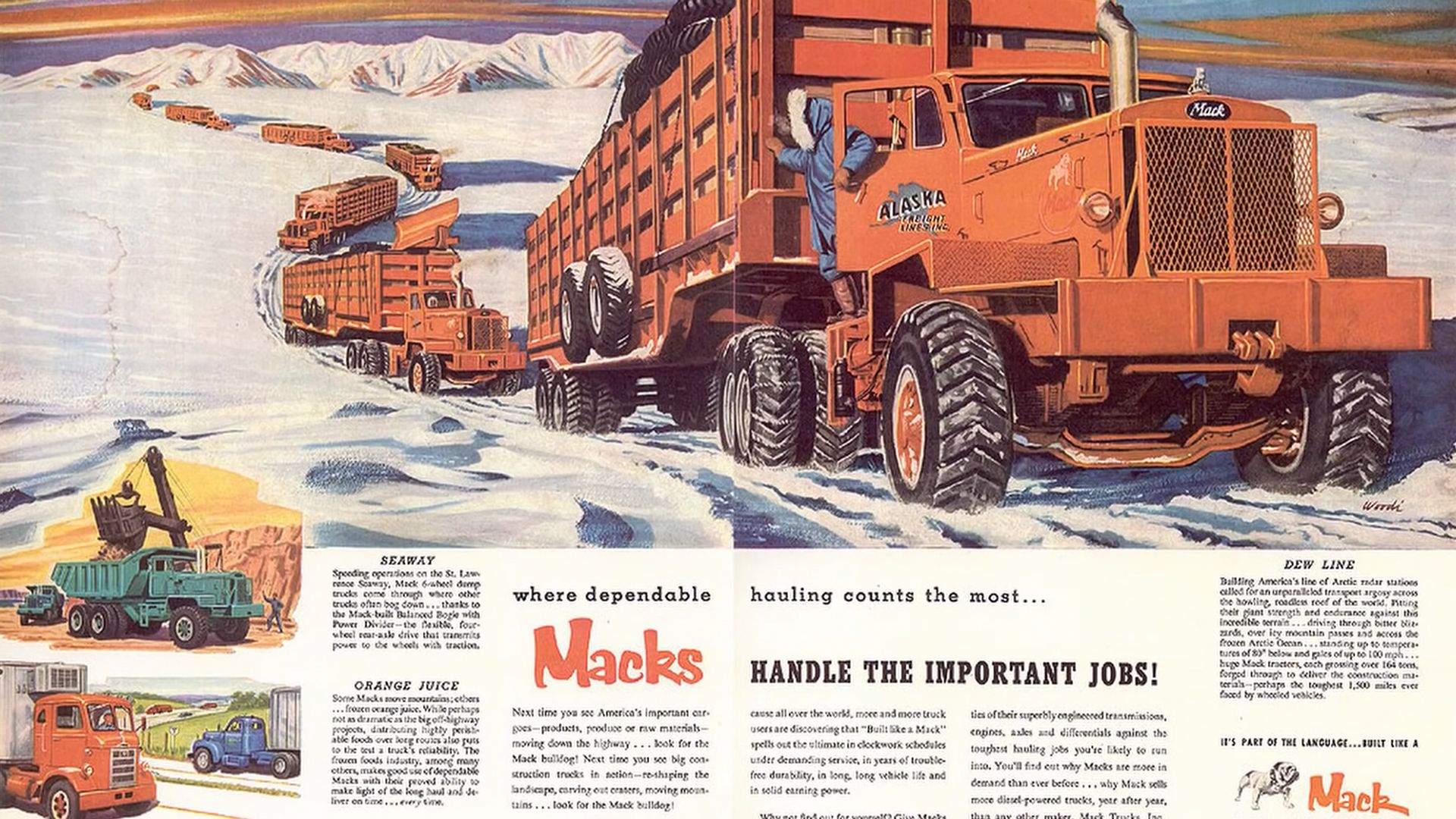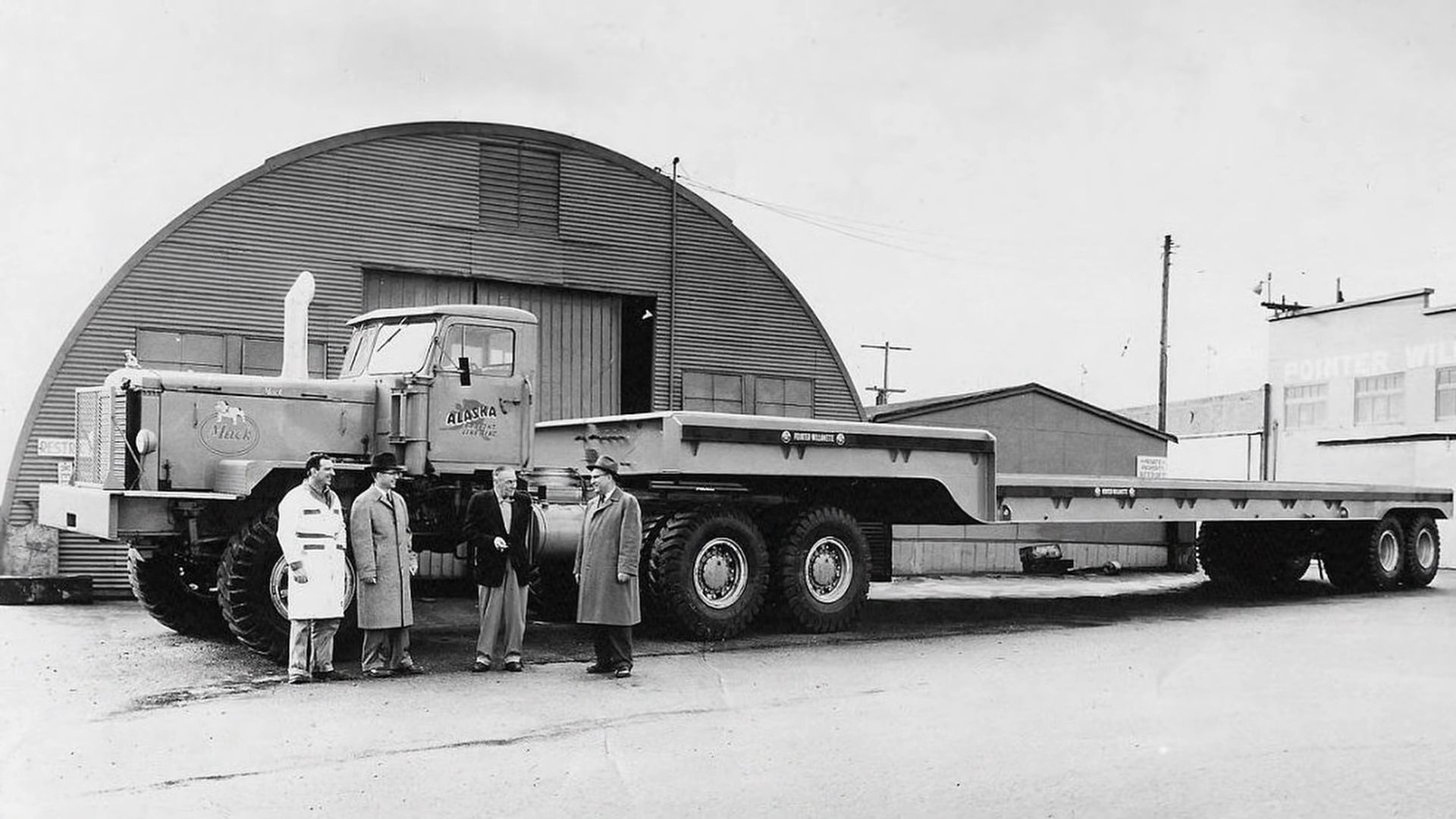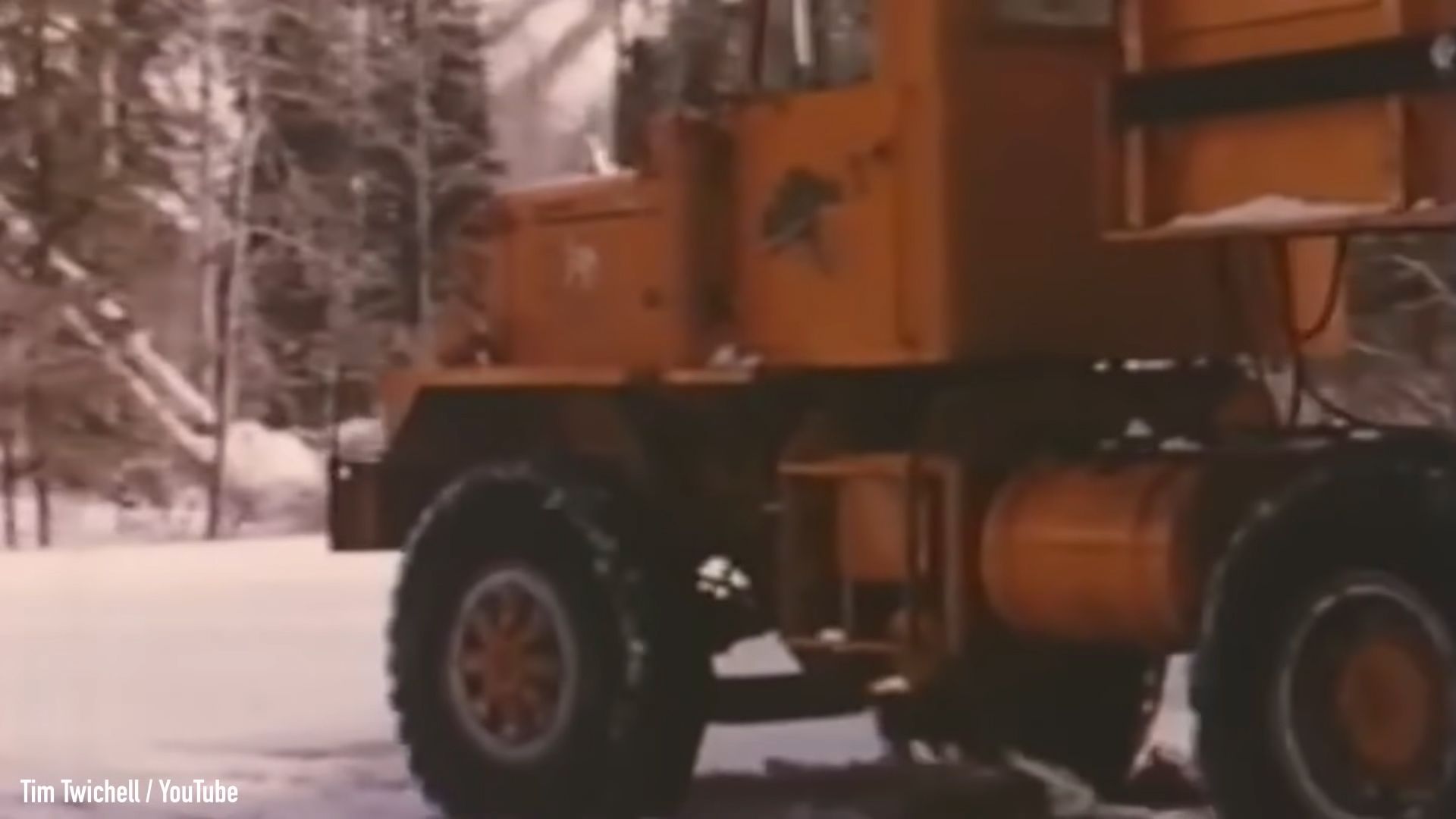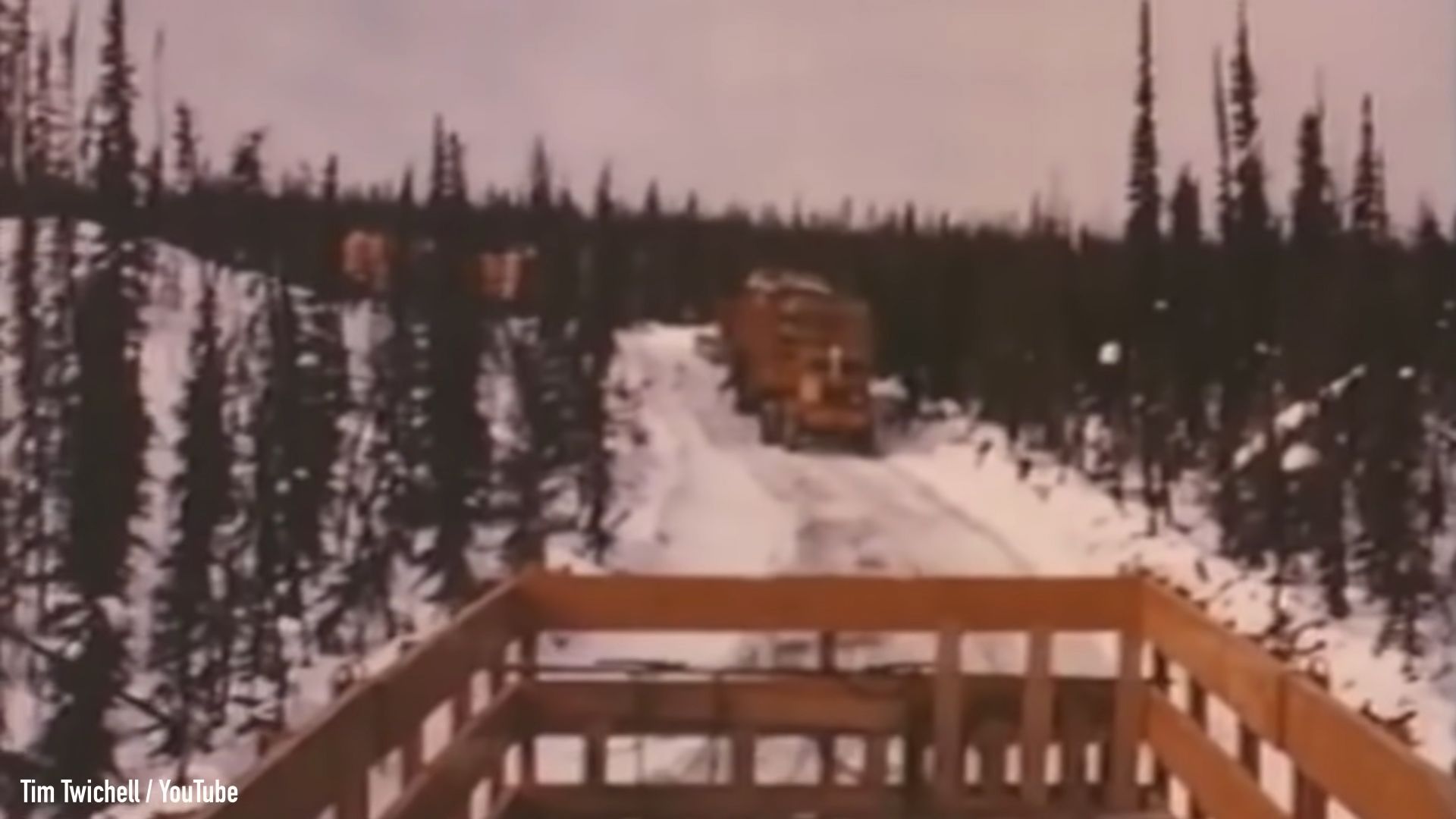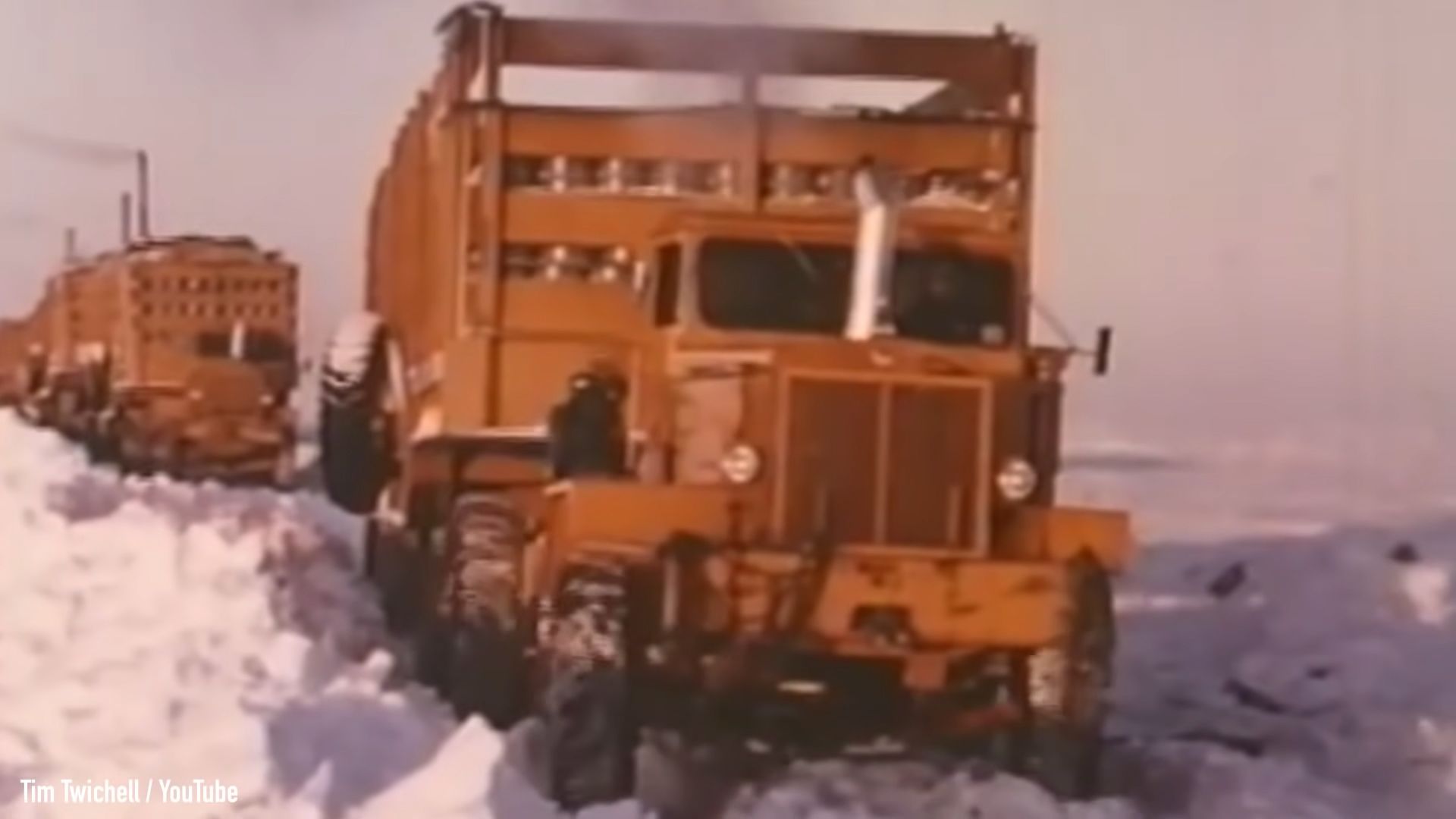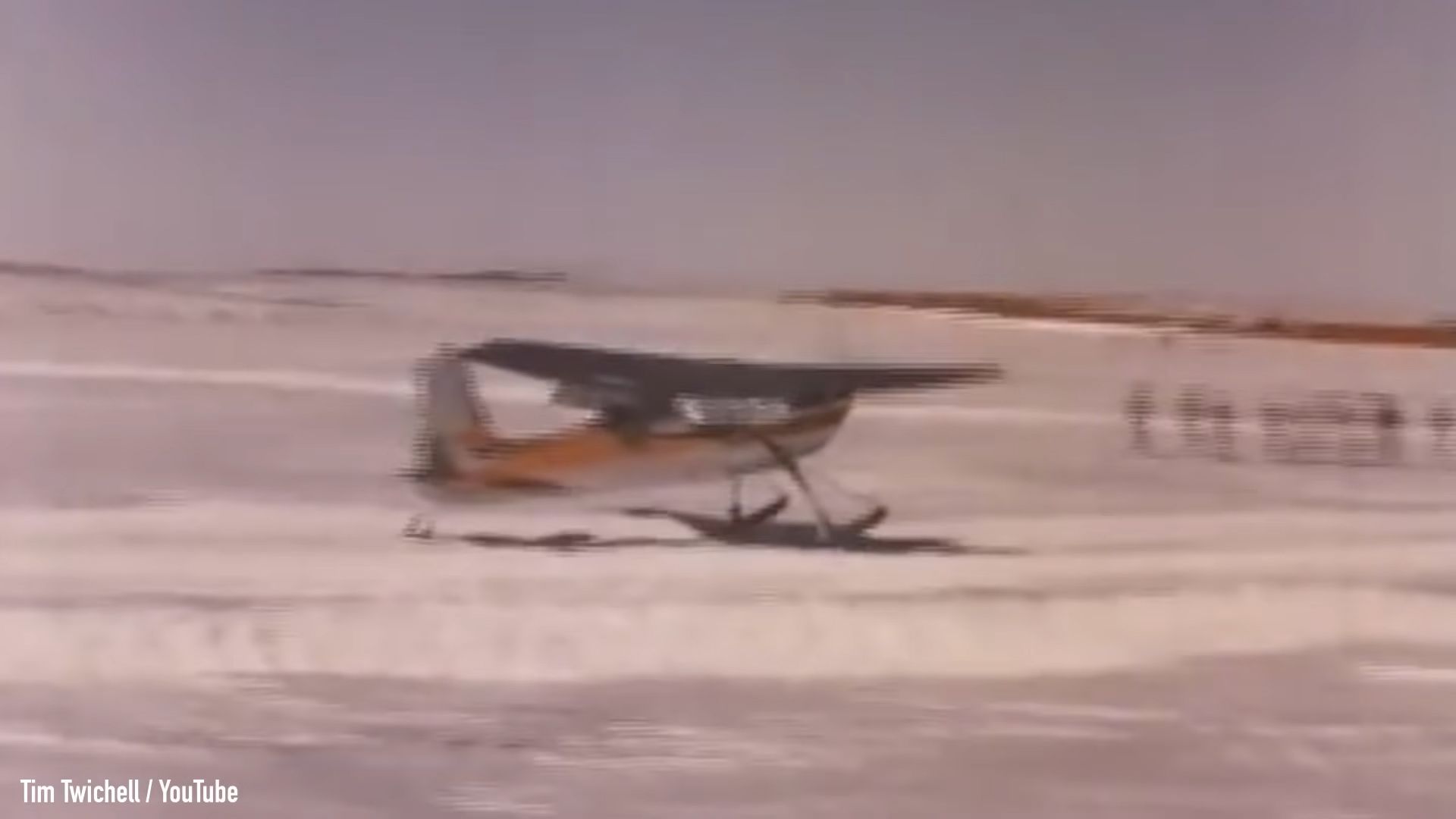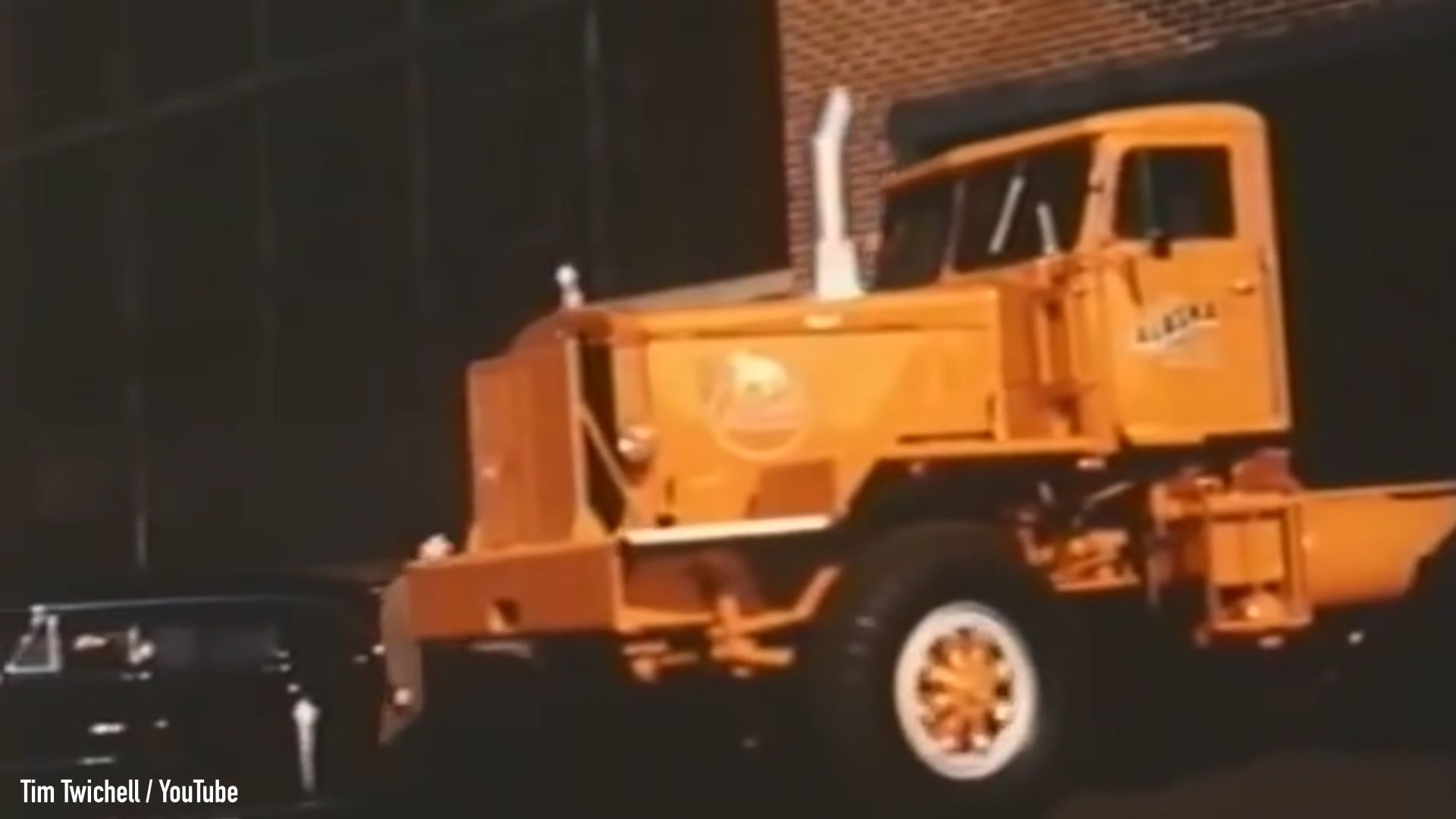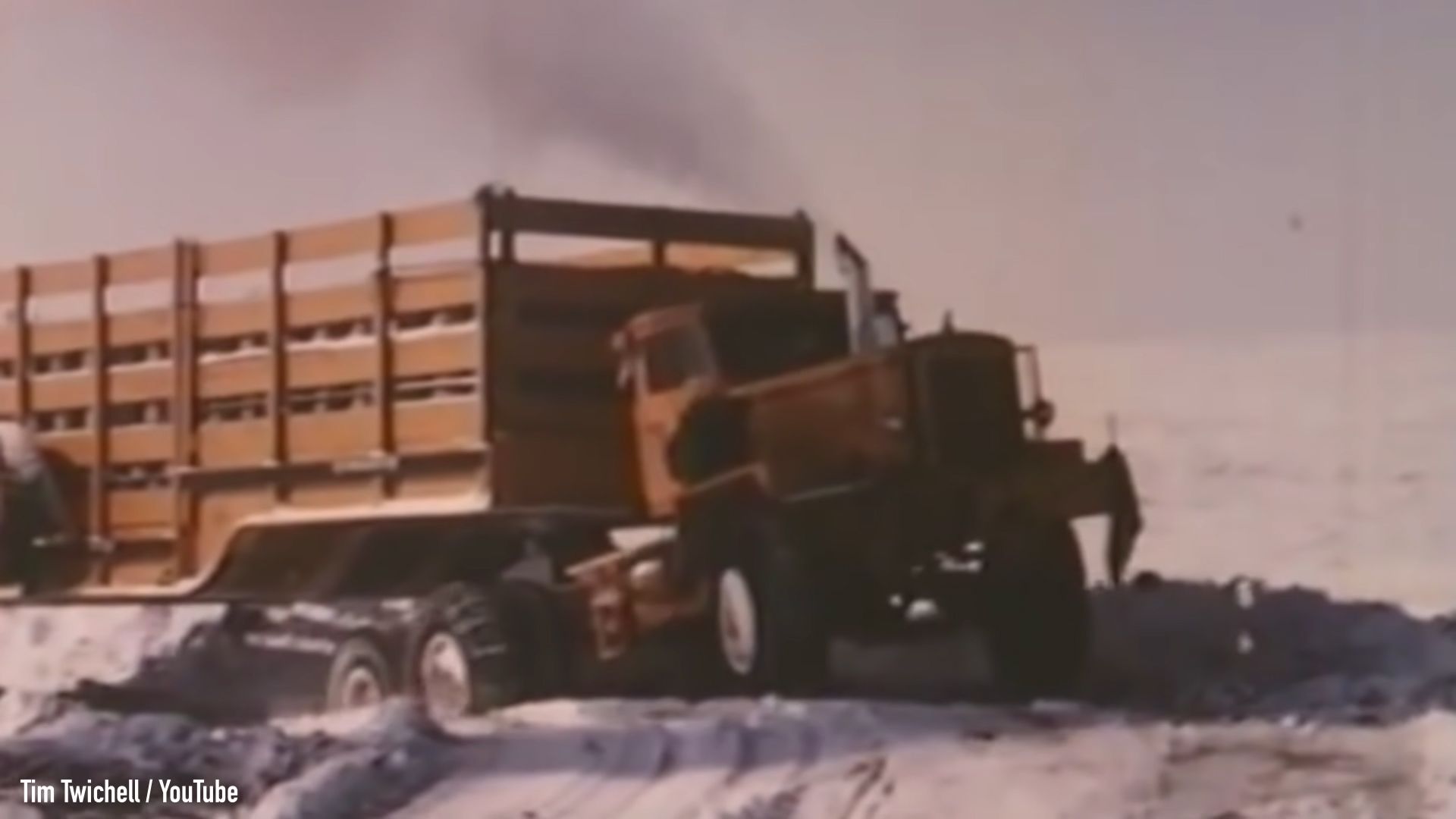11 Mack trucks, each with a 28-liter V12 Cummins diesel engine under the hood, hauling over three million pounds of cement and steel into the freezing Arctic Circle, 1,500 miles away from civilization.
Sounds a bit crazy, doesn’t it? But amid the bleak 1950s, when North America was under the threat of a nuclear showdown with the Soviet Union, the West’s solution was the so-called Distant Early Warning Line, or DEW Line, which consisted of 63 manned radar stations about 200 miles north of the Arctic Circle.
And, well, construction material had to be hauled into the freezing terrain somehow.
So keep reading to find out the story of the amazing 1956 Bulldog Convoy in the Arctic, which involved 11 Mack trucks filled to the brim, a couple of bulldozers, and a team of unbreakable men.
Birth Of the Distant Early Warning Line
It’s the 1950s, and America isn’t exactly seeing eye to eye with the Soviet Union. It was so bad that the West was fearing an atomic war was about to begin, especially after realizing that Russian nuclear bombers could just fly over the Arctic Circle to deploy their devastating weapons on US soil.
So in 1954, the American and Canadian governments drew up the plan to build the so-called Distant Early Warning Line, or DEW Line. An array of 63 manned radar stations scattered across the Arctic Circle, which would be able to detect incoming aircraft and warn the West’s armies.
But the Arctic isn’t exactly a friendly place to be, let alone build something of this magnitude. So it became clear from the get-go that it would be a near-impossible task just to haul the necessary supplies up to the DEW Line. It was evident that your run-of-the mill truck just wouldn’t do.
Rise and Fall of the LeTourneau VC-22 Sno-Freighter
The Bulldog Convoy
Enter the giant Mack Trucks that hauled no less than three and a half million pounds of cement, steel and supplies to the frozen Arctic. The so-called Bulldog convoy was made up from 11 LRVSW trucks which were powered by 28-liter Cummins V12 diesel engines that made 600 hp and 1,600 pound-feet of torque.
The rigs were ordered in November 1955, and two months later they were shipped by rail from the Bulldog’s manufacturing plant in Allentown, Pennsylvania to the Alaska Freight Lines base in Seattle, where they were serviced and winterized, 2,500 miles away from home.
The same Alaska Freightlines company operated the LeTourneau VC-22 a year earlier, and this time around it had a completely different monster on its hands. While the VC-22 was basically a 24-wheel-drive trackless train, the Macks had to make due with just 6x4 traction, but they had an ace up their sleeve.
You see, the transmission was a Mack two-lever manual shift Duplex gearbox, with eight forward speeds and two reverse. Power was then sent to a Mack Planidrive dual reduction axle bogie, with inter-axle and differential power dividers. This was a pretty cool piece of technology back then, and it really did its job in the rough, freezing terrain.
Behind each tractor was a 65-feet long trailer that carried 330,000 pounds of cargo, or 165 tons, and had built-in tanks that could store 5,600 gallons of diesel fuel. You know, because gas stations aren’t exactly commonplace in the Arctic.
At the front of the convoy were a couple of bulldozers that slowly but surely made a path through the ice and snow for the trucks. And after watching the 65-year old promotional video a couple of times, I can only wonder what the operators of these open-cab machines had to go through during this treacherous journey. It was an excruciating job, I’m sure.
The men drove in 12-hour shifts, and the trucks ran 24/7, with their engines only being shut off for quick servicing, as the starting procedure took several hours and involved heating the engine and transmission with fire.
Water froze almost immediately if it was taken outside, and everything had to be done the hard way, with the team being forced to unload multiple trailers several times in order to get them unstuck, only to have them reloaded for the journey to continue.
But it wasn’t all bad. On sunny days with good weather, small airplanes would land near the convoy and bring in mail for the crew, as well as fresh fruit and vegetables. The planes were also used to survey the land from above, charting a course for the people on the ground.
As for socializing, there was the occasional encounter with the local Eskimos, who were bewildered by the sheer size of the convoy and its ability to confront a terrain that’s usually traversed with sled dogs.
A Sucessful Expedition
The expedition was a success, although it’s unclear how much time it took for the team to transport everything. In the end, it seems that two of the trucks were sold to a coal mine in Alaska, but as for the remaining nine rigs, nobody really knows what happened to them.
I like to think they made their way back South, to warmer working conditions, but the fact of the matter is the cost of running such a convoy was simply immense, and there’s a good chance that the semis met their end in the Arctic. It was a major undertaking and an impressive achievement which ultimately led to the construction of the DEW Line, with its nuclear-bomber-detecting radars.
Thankfully, the atomic apocalypse never came, but this story demonstrates - yet again - the sheer willpower and ingenuity people are able to show when it’s time to roll up their sleeves.
And for me, a kid of the ‘90s, it’s something that might just never happen again. But what do you think? Could mankind pull a stunt like this in this day and age? Let me know in the comments below.

